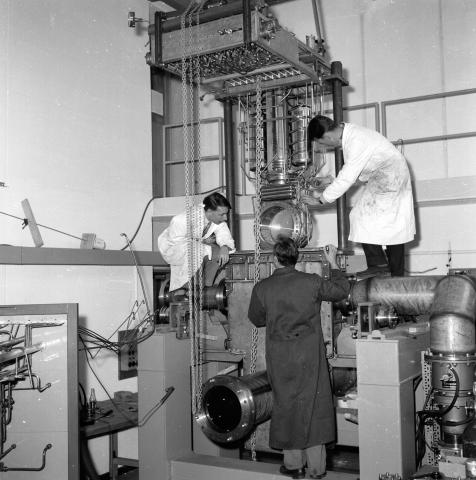...55 years ago
The 30cm liquid hydrogen bubble chamber (HBC30) - here seen being inserted into its vacuum tank in March 1959 - was the first bubble chamber to be used for physics experiments at CERN. After testing with nitrogen and hydrogen it was placed in the Synchro-Cyclotron, and its first five days of operation in November yielded 100,000 photographs. In March 1960 it was moved to the proton Synchrotron, and by the time it ceased operations in spring 1962 it had consumed 150 km of film.
Bubble chambers were one of the main experimental tools used in high-energy physics during the 1950s and 1960s. They were filled with superheated liquid, and if a charged high-energy particle passed through the liquid started to boil along its path, producing a trail of tiny bubbles that could be photographed. CERN’s first bubble chamber was a small (10cm) trial model, developed to test this exciting new technique. Larger models soon followed, including the giantess Gargamelle and the Big European Bubble Chamber (BEBC).

